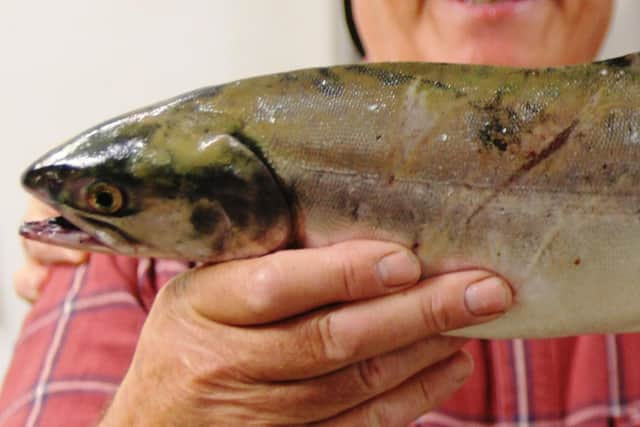Alert over alien salmon that escaped from Russia in the Foyle
and live on Freeview channel 276
These migratory species of salmon, also known as ‘humpback’ salmon, are native to river systems in the northern Pacific Ocean but populations appearing in Europe are believed to have originated from stocking programmes in Russia in the latter stages of the 20th century.
Recordings of Pacific pink salmon in the Foyle and Carlingford catchments had been rare until 2017, when unprecedented numbers of the species began to be reported within inshore coastal waters in Scotland and England, and small numbers appeared in the Foyle catchment.
Advertisement
Hide AdAdvertisement
Hide AdIn 2019, the species was spotted in the Faughan, Dennett, Roe and Mourne Rivers within Loughs Agency’s Foyle catchment, and it was also prevalent in many other rivers throughout Ireland.


Anglers are asked to be especially vigilant for potential reappearances of Pacific pink salmon during August and September, when they are most likely to be in spawning areas.
The following steps should be followed in the case of sightings or catches of Pacific pink salmon:
Take a clear photograph of the fish and keep a copy of the image;
Advertisement
Hide AdAdvertisement
Hide Ad Record the date, location and method of capture or sighting, as well as details of the site;
Note the weight and fork length measurement of the fish;
Record the sex of the fish;
Freeze and store the fish whole as soon as possible after capture;
Contact Loughs Agency immediately on +44 (0) 28 71 342100.
Advertisement
Hide AdAdvertisement
Hide AdIf you are unsure as to the appearance of Pacific pink salmon, the following information can help identify the species:
Adult fish fresh from the sea are blue-green to steel blue on the back;
Tend to have silver sides and a white underbelly;
Range from 40—55cm in length (maximum 76cm);
Range from 1kg-2.5kg in weight (maximum 6.8kg).
Further information can be found at loughs-agency.org.
